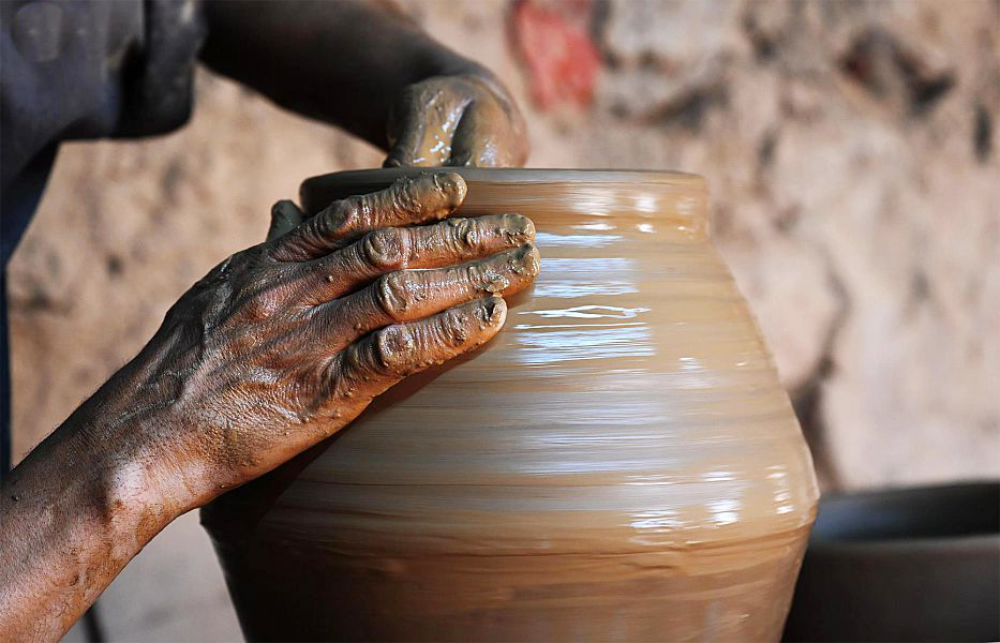MADINAH: Madinah is known for traditional handicrafts and pottery, as well as the Prophet’s Mosque and other religious sites.
Pottery was initially used by people in everyday life as household items, from storage and cooking to transportation of goods.
But today, due to factory-produced household goods made of plastic, ceramic and aluminum, the ancient craft of pottery is slowly dying as people merely use it as souvenirs or decorative items.
The Saudi Heritage Authority is conducting courses and workshops to preserve pottery, and supporting family potters by displaying their products at events, the Saudi Press Agency reported.
Tammam Mahmoud, one of the potters in the region, is striving hard to keep the art alive. “I’m proud to have inherited this profession from my father and grandfather more than 40 years ago. Despite the challenges and difficulties faced by potters, patience is helping them move forward,” said Mahmoud.
FASTFACT
Potter Tammam Mahmoud said the clay used for pottery production is sourced from the valleys of Madinah following rains.
“Demand for pottery is declining due to the diversity of modern household utensils that have become widely accessible, as well as their different prices.
“Today, the pottery industry is limited to the technical and aesthetic aspects … such as souvenir gifts bought by tourists.”
Mahmoud said the clay used for pottery production is sourced from the valleys of Madinah following rains.
Sharing how a product takes shape, the artisan said the clay dough is prepared by hand before adding other natural materials to ensure it holds together.
The clay is then shaped using molds of various sizes to obtain the required design. The product is dried under the sun, before being baked in a traditional oven at a specific temperature to ensure its durability. It is then sent to the market for sale.















